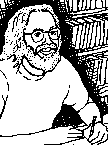CMPIO
We met with three leaders of CMPIO, the Oaxacan Coalition of Indigenous Teachers and Promoters. Juan Santiago Santiago began with a history of how CMPIO emerged as part of a struggle to bring attention to Indigenous values and social issues in the educational process. In 1974, 350 Indigenous teachers and promoters went on strike to demand their rights, including a bilingual educational training center. In 1982, they introduced a special anthropology course to study Indigenous cultures in Oaxaca.
Beatriz Gutiérrez, secretary-general of CMPIO, explained how CMPIO worked independently from its founding in 1974 until 1982 when they joined Section 22 of the teachers union that had been founded two years earlier. With Section 22, they worked more on pedagogical issues, but always with an eye toward joining social movements in communities to struggle against discrimination and to build better lives.
Fernando Soberanes explained how CMPIO broke with earlier programs that sought to integrate Indigenous peoples into the dominant Hispanic culture. Through the influence of Paulo Freire’s critical pedagogy, they struggled to have the educational process match their Indigenous students’ realities. In 1978, CMPIO took over the Ministry of Education in Mexico City with three main demands: eviction of the Summer Institute of Linguistics (SIL/ILV), to maintain CMPIO as an institution, and to recognize formally Indigenous schools. The government only signed off on their demands when the king and queen of Spain visited Mexico and wanted to see the famous Diego Rivera murals in the Ministry’s building. Fernando emphasized, however, that the struggle has come at a great cost with seven of their comrades being assassinated.
CMPIO is a part of APPO, and Fernando emphasized that APPO did not just start last year but emerged out of years of struggle. An Indigenous concept of community allows people to resist the repression, exploitation, discrimination, racism, and poverty that they face. Both the Section 22 teachers union and APPO help sustain CMPIO’s efforts. Although APPO’s logo does not refer explicitly to Indigenous peoples, that concept is implicit with its references to community.
The CMPIO leaders acknowledged problems with APPO, including that it emerged too quickly which did not leave time to bring communities along with the process. This has complicated the organization’s decision-making processes. Teachers have two roles: to teach and to protest, but sometimes there is a lack fo logic between the two. Sometimes teachers replicate authoritarian systems in the classroom, and they need to break those patterns of dependency. This can be done through bringing empowering pedagogy into the communities. In addition, it is difficult to escape the government’s mechanisms of controls, particularly authoritarian caciques (chiefs) who maintain control over areas. Mexico, Fernando emphasized, is not interested in supporting education but rather privatizing the educational process in order to create a cheap labor force. The government is not interested in training us to think for ourselves or to become conscious of our reality. We need to study our history in order to become more conscious of it. Teachers play a critically central role in this process.

